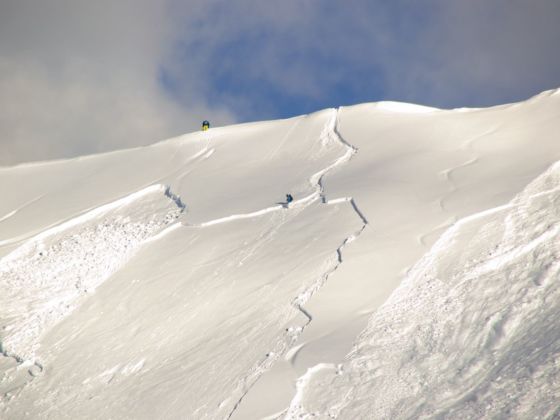A Mack truck of snow, cascading at 100 mph, bears down on you. The ground shakes, thunder fills your ears, and everything goes white.
What do you do?
Each year, avalanches claim 150 lives worldwide. The majority of victims are backcountry recreationalists—skiers, snowmobilers, climbers, and snowshoers who venture into unpatrolled terrain.
The good news: Most avalanches are triggered by the very people they ensnare, and can therefore be prevented with the proper mix of know-how and caution.
